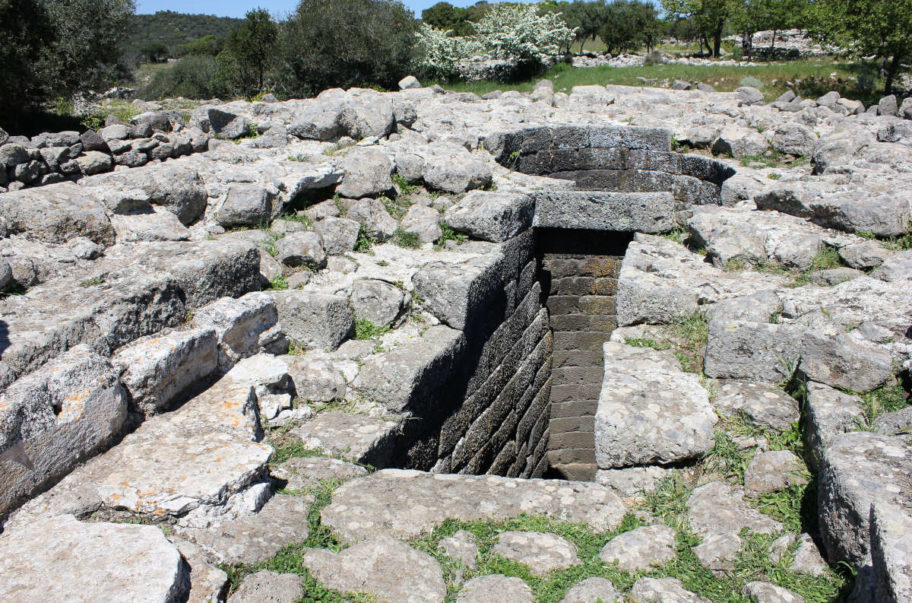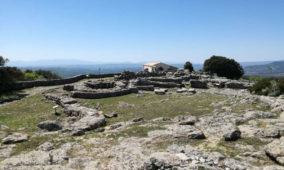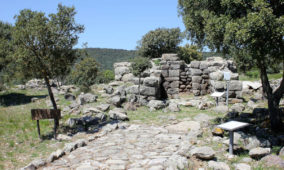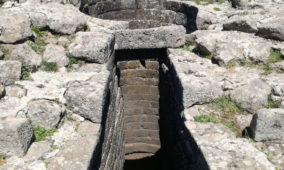Corpo Pagina
Serri, a town in the Sarcidano area on the basaltic plateau of the Giara di Serri, preserves in its territory one of the largest and best preserved Nuragic sanctuaries on the entire island.
On Santa Vittoria plateau, one of the most important excavation campaigns was conducted by the Superintendent of Excavations and Archaeological Museums of Sardinia Antonio Taramelli, in charge from 1909 to 1933: he brought to light a vast sanctuary studied in repeated, several times since 1909.
The area shows traces of habitation dating back to the Bronze Age. However, it was from the Early Iron Age that the site was organized into a true sanctuary.
The sacred area is made up of several elements:
– the sacred enclosure, a “large space suitable for encouraging aggregation by welcoming a large number of pilgrims from various villages who could attend ordeal rites or skill competitions”, as says M.A. Fadda in “La Sardegna nuragica. Storia e monumenti”;
– the well temple, built with well-squared basalt blocks;
– the sacred way;
– numerous huts with different functions.
There are two sacred structures recognized with certainty so far: the aforementioned well temple and a hypetral temple, where two monolithic altars were found with a drainage channel in the center, useful for draining the blood of the sacrificed animals.
As regards the huts, one refers to the working of bronze, due to the presence of melting slag inside. Others, however, probably had a representative function: they could be places where the community met in assembly, rooms intended for the consumption of community meals or they could even be used as a home for the chief or the priest.
The small church of Santa Maria della Vittoria was built near the well temple in the Byzantine era.
Downstream from the plateau is the site of Biora, a Roman settlement of which few traces remain, located along one of the roads that led from Cagliari, ancient Carales, to Olbia.







